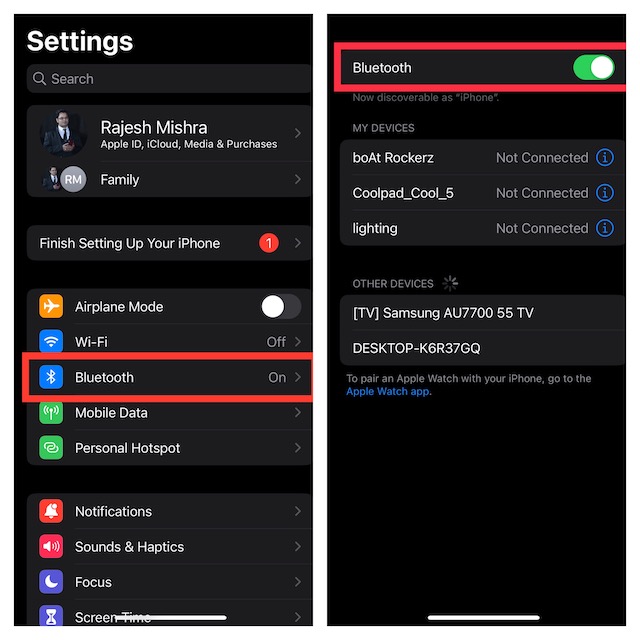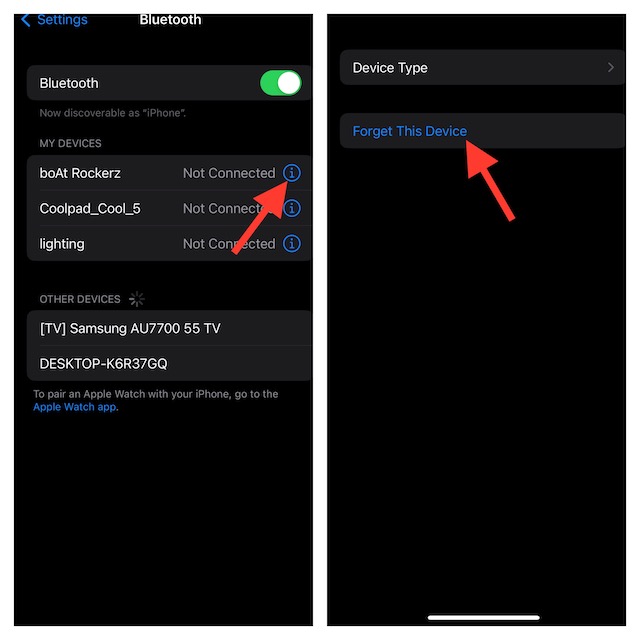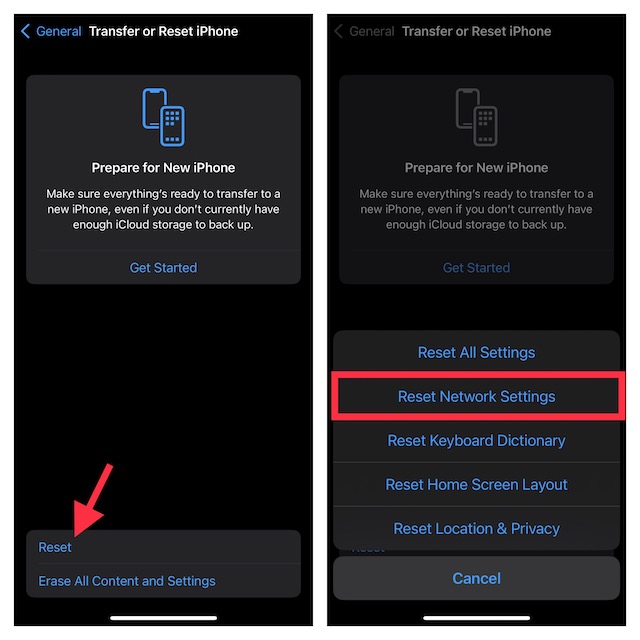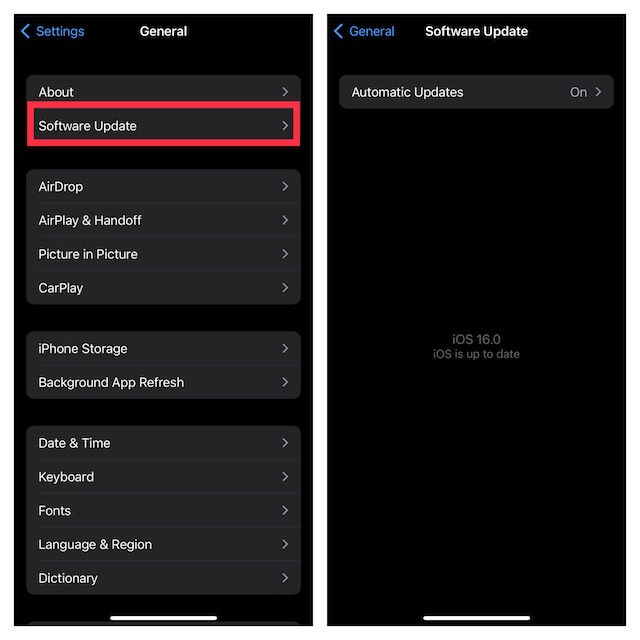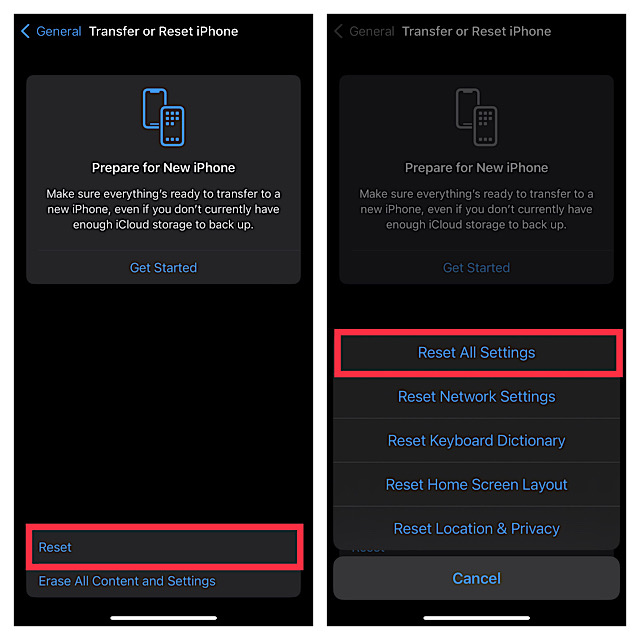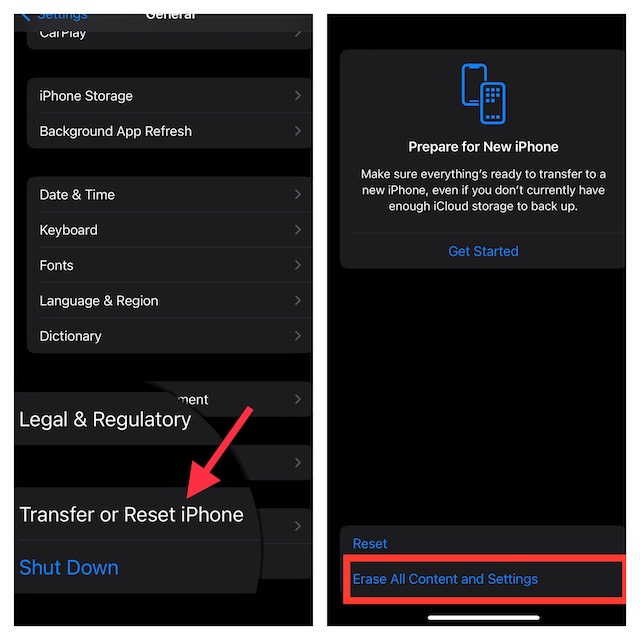Best Tips & Tricks to Fix iPhone Bluetooth Not Working Issue in iOS 16
First off, let’s figure out the possible causes of the Bluetooth issues on iPhone!
What Causes the Bluetooth Issue on iPhone?
When Bluetooth stops working, you should look at it from both software and hardware perspectives. If the Bluetooth accessory is facing any internal issues, it would have trouble connecting to the iPhone and even working properly. Besides, there could also be software-related issues that could be hindering the Bluetooth device from functioning. As for the issues concerning the iPhone, a software bug and an out-of-the-blue glitch could be in the play. Besides, in some rare cases, there could also be hardware failure that could be obstructing Bluetooth from working. Here are all the usual suspects:
Low battery on the Bluetooth accessory Outdated version Out-of-the-blue glitch Software bugHardware failure (in rare cases)
Having taken all these culprits into consideration, we have offered up solutions to troubleshoot the Bluetooth related issues on iOS. Now that you have figured out the possible reasons, let’s start with the troubleshooting guide! Note: We have created a separate guide about fixing all the common iOS 16 problems. Do check out this post, if you are facing a cluster of issues after updating to the latest iteration of iOS.
1. Ensure That the Bluetooth Accessory is Charged
If the Bluetooth device is running low on power, it won’t work properly. It would have a hard time connecting to the iPhone and may also automatically disconnect. So, check if your Bluetooth accessory has enough juice in the tank. Make sure to power it up, if the battery is not charged up.
2. Make Sure You Have Allowed the Companion App to Access Bluetooth
iOS allows you to control third-party access to Bluetooth on your iPhone. While customizing the privacy settings on your iPhone, you may have mistakenly revoked the companion app’s access to Bluetooth and forgot to restore it. Thus, ensure that the app can use Bluetooth on your device.
Go to the Settings app on your iPhone -> Privacy -> Bluetooth and then make sure that the toggle next to the app is turned on.
3. Turn OFF/ON Bluetooth
Believe it or not, probably the easiest way to troubleshoot Bluetooth issues on iOS is to just turn it off/on. Many a time, it can help you instantly resolve the problem. So, give it a go without fail.
Open the Settings app on your iPhone > Bluetooth > and then turn off the toggle.
Now, restart your iPhone. Once your iPhone has rebooted, go back to the Bluetooth settings and then turn it on.Next, try to connect your device to the Bluetooth accessory to check if you have gotten the better of the problem.
4. Restart Your Bluetooth Device
At times, all you need to do to fix an ill-functioning Bluetooth device is to just reboot it. Yeah, you got that right! The soft rest is very effective when it comes to flushing out random glitches. Therefore, give it a chance as well. Since the process of rebooting a Bluetooth device may vary, make sure to take the help of the user manual if you are not sure how it’s done.
5. Make Sure Your Bluetooth Device is Updated
If you haven’t updated your Bluetooth device for a while, there is a good chance that the outdated version of the software could be playing the villain’s role.
If you are using AirPods headphones/earphones, you can update them with utmost ease. Just pair the AirPods with your iPhone -> place them in the charging case -> plug in the case and your earphones should update automatically. And if you are using any third-party Bluetooth device, open the companion app and then look for the option to update the earphones.After you have successfully updated your Bluetooth device, try to connect it to your iPhone to check if you have resolved the Bluetooth problem. If the issue is gone, your Bluetooth accessory, and not the iPhone, was at fault.
6. Forget the Bluetooth Device and Reconnect to Your iPhone
Whenever I find my Bluetooth accessory struggling to work as expected or embroilled in an unexpected problem, I make sure to try out this hack to overcome the issue. More often than not, it does not let me down. Hence, I’m going to count on it to fix this issue as well.
Navigate to the Settings app on your iPhone > Bluetooth.Now, tap on the tiny info button next to the Bluetooth device. Next, tap on Forget This Device and confirm.
Next up, reconnect the Bluetooth device to your iPhone.
7. Try to Connect the Bluetooth Accessory to Another Device
No solution as yet? Don’t worry as we are not done yet! Try connecting the Bluetooth accessory to another device. If you are able to connect and use the Bluetooth accessory to another device without any pain, the problem is with your iPhone, and not the accessory.
8. Hard Reset Your iPhone
When you talk about fixing annoyances, very few solutions have got a better track record. Thus, there is no question of missing out on this one – no matter what. Wondering what makes it so efficient? Well, it’s able to get rid of temporary files and clear memory which often works wonders in resolving occasional problems.
Press and quickly release the volume up button. Then, press and quickly release the volume down button. Finally, hold down the side button until you see the Apple logo on the screen.
9. Reset Your Bluetooth Accessory
Times when an Bluetooth accessory seems to get entangled in a frustrating issue, the hard reset comes in handy. Note that the process of hard reset is not the same for all accessories. Therefore, be sure to take help, if needed.
Resettings AirPods is pretty easy. With the lead open, you need to press and hold the setup button on the back of the case for about 15 seconds until the status light starts flashing amber and then white.
Next, reconnect your AirPods to your iPhone. With the lead option, just place your AirPods close to your iPhone and then follow the instructions to set it up.
10. Reset Network Settings
When you are up against persistent network-related issues, resetting network settings comes in super handy. More often than not, it is able to resolve the problem. Hence, we are looking at it as the go-to troubleshooter.
Head into the Settings app > General > Transfer or Reset iPhone > Reset > Reset Network Settings.
Now, you would be asked to enter your device passcode. And if the Screen Time passcode is set as well, you will need to enter it before being able to confirm the action.
11. Update Your Device
Most software updates come loaded with a ton of bug fixes and performance improvements. Hence, there is a strong likelihood that updating the software will be able to solve the issue.
Navigate to the Settings app on your device > General > Software Update and then download and install the latest iteration of iOS as usual.
12. Reset All Settings
You can bank on factory reset to resolve even the most complex iOS issues. Given how reliable it has been when it comes to dealing with bugs and miscellaneous glitches, we will give it a shot as well.
Head over to the Settings app on your device > General > Transfer or Reset iPhone > Reset > Reset All Settings.
13. Last Resort: Restore Your iPhone As New
Not for nothing, restoring is considered to be the nuclear solution. When all else fails to troubleshoot any problem, we are often recommended to try it out. But, bear in mind that it will wipe out your entire device and install the latest stable software. So, make sure to back up your entire device beforehand.
Restore Your iPhone or iPad with a Computer
Contact your device to your computer. On Mac, open Finder. If you are using Windows PC, launch iTunes.Next, select your device and then click on Backup Now. If you want to back up Health data and Safari passwords, be sure to encrypt the backup (look for this option and check the box). Once your device has been successfully backed up, click on Restore iPhone.
Restore Your iPhone without a Computer
Just in case you have plenty of iCloud space, you can restore your iPhone without using computer. Once again, make sure to back up your device before going ahead.
Open the Settings app on your device > your profile > iCloud > iCloud Backup and then back up your device.After that, navigate to the Settings app > General > Transfer or Reset iPhone/iPad > Erase All Content and Settings.
After you have successfully erased your iPhone, follow the setup assistant to set up the device from the scratch. During the setup, Apple would offer you the option to restore the backup. Choose the most recent backup and then customize the settings to your liking.
14. Contact Apple Support
From what I can tell based on my experience, you won’t have to come so far. However, if nothing has come to your rescue, I suspect there could be some hardware-related issue going on. And in this scenario, contacting Apple Support is the best way to go. So, do not wait any longer.
Why is iPhone Bluetooth not working after update?
It could be due to a software bug. Hence, updating the software could sort out the issue.
How to Reset Bluetooth on iPhone?
You can easily reset Bluetooth on iPhone by resetting the network settings (Settings app -> General -> Transfer or Reset iPhone -> Reset -> Reset Network Settings).
Why is my iPhone not detecting Bluetooth headphones?
It could be due to multiple things like a random glitch or low battery on the Bluetooth accessory.
Fixed Bluetooth Not Working Issue on iPhone Running iOS 16 or Later!
There you have it! So, these are the best tips and tricks to get rid of the iPhone Bluetooth issues in iOS 16. I guess you have eliminated the problem for good. Which one of these hacks has enabled you to resolve the Bluetooth problem? It would be great to know that in the comments below.

